Mexico has it all, from the clear blue Caribbean waters to the rugged mountains of the Pacific Coast. It’s a country with a rich cultural heritage, world-famous food, and friendly locals.
The coasts are warm all year round, making Mexico a great dive destination any time of year. There are tons of options for scuba diving all over the country.
On the Yucatan Peninsula, white sand beaches lead to the world’s second-longest barrier reef, which hosts a variety of tropical species.
You might catch an eagle ray or nurse shark passing by, while seahorses and toadfish hide in the reef waiting to be spotted.
Mexico’s Pacific diving boasts some of the best spots for large marine life, like scalloped hammerhead sharks, bull sharks, and sea lions.
You can choose to experience easy shore dives or challenging sites on luxury liveaboards, so there is something for everyone underwater in Mexico.
Quintana Roo
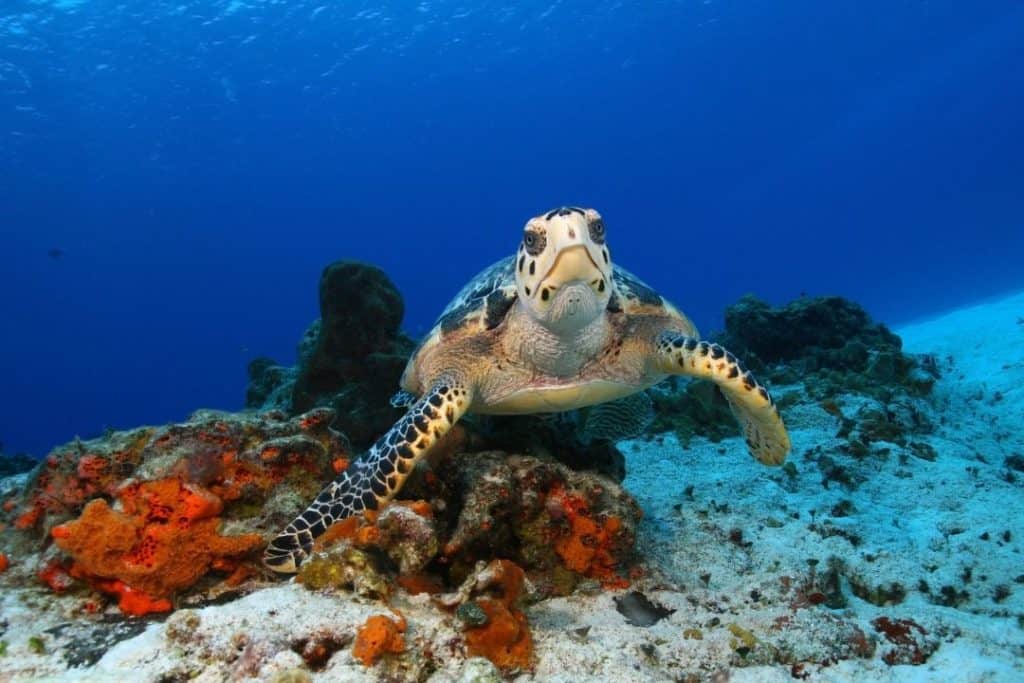
The Caribbean diving in Mexico is found in the state of Quintana Roo, home to the world-famous tourist destination Cancun.
But only the divers know that past the white sand beaches lie some of the best coral reefs in the world.
The largest barrier reef in the West – the Mesoamerican Reef – runs along Mexico’s coast and provides a variety of reef diving dive sites for beginners and advanced divers alike. The Yucatan peninsula is full of lush jungle and Mayan ruins.
Divers flock to Cozumel, expecting to see hundreds of tropical fish species, turtles, huge barrel sponges and nurse sharks nestled among the coral.
The sea is famously warm and clear in this region, and visibility frequently exceeds 30 meters (100 feet).
There are wrecks, coral pillars, walls, shore dives, drift dives, bull shark dives, and even cavern dives.
It’s a great place for brand new divers to learn – in fact I got my open water certification there!
Advanced divers can adventure down deep walls or into ‘cenotes’ caverns for cave diving. Check out some of the best dive spots in Quintana Roo below.
How to get there
Quintana Roo is easily accessible by plane to Cancun, which is a major international airport.
From there, you can drive or taxi to Playa del Carmen. To get to Cozumel Island, take the ferry from Playa Carmen, a short flight from Cancun, or hop off a cruise ship!
Where to stay
Cozumel has only one town called San Miguel. If you want to be close to shops, restaurants, and dive operators, it’s best to stay in or near the town.
There are some luxury and all-inclusive resorts a bit north and south of the town along the coast if you prefer seclusion.
Playa Carmen is also a small town, so you have the choice of staying right on the beach or further inland.
Here are some recommendations to get you started:
- Budget: Casa Del Solar – Cozumel
- Mid: Playa Maya – Playa Del Carmen
- Luxury: The Landmark Resort – Cozumel
Cozumel Island
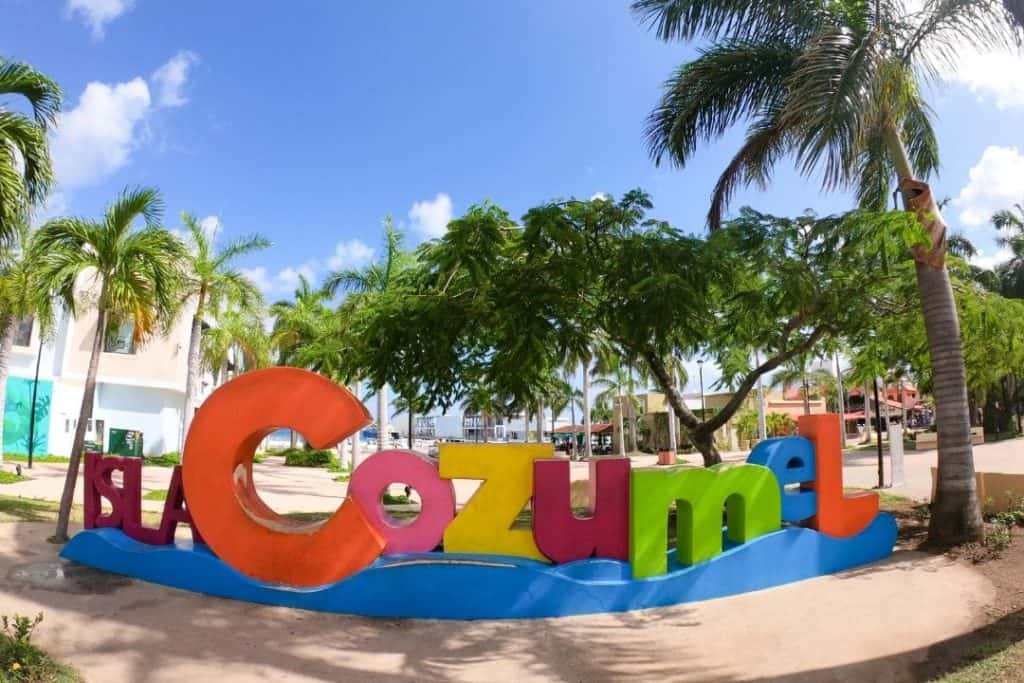
Cozumel is Mexico’s largest Caribbean island and a diver’s paradise. (See my Diving in Cozumel Diver’s guide)
There are many dive shops, so feel free to call around and choose one you like.
You can enjoy shore diving, boat diving, drift diving, wreck diving, and some sites even have caverns to explore.
C53 Felipe Xicotencatl Wreck
This decommissioned U.S. Navy ship was sunk in the Cozumel Marine Park to create an artificial reef and dive site.
It rests around 24 meters (78 feet) on the sand and has been modified for divers to safely enter. It’s a great spot to get your wreck specialty.
It’s best for advanced divers since it’s on the deeper side, and the current can be strong at times. Look for moray eels hiding in the ship’s nooks.
Palancar Reef
The Palancar sites (Gardens, Horseshoe, Bricks) have stunning coral pillars that create fun swim-throughs.
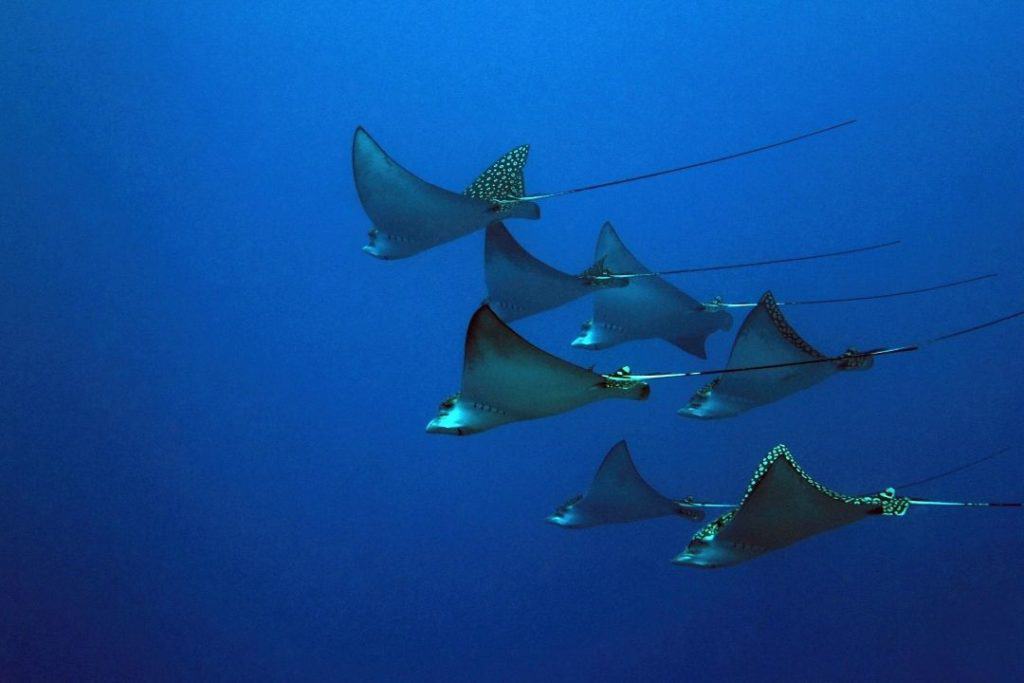
Beginners and advanced divers can enjoy a drift dive over the coral. Watch for passing eagle rays and look closely on the coral for nudibranchs.
Playa del Carmen
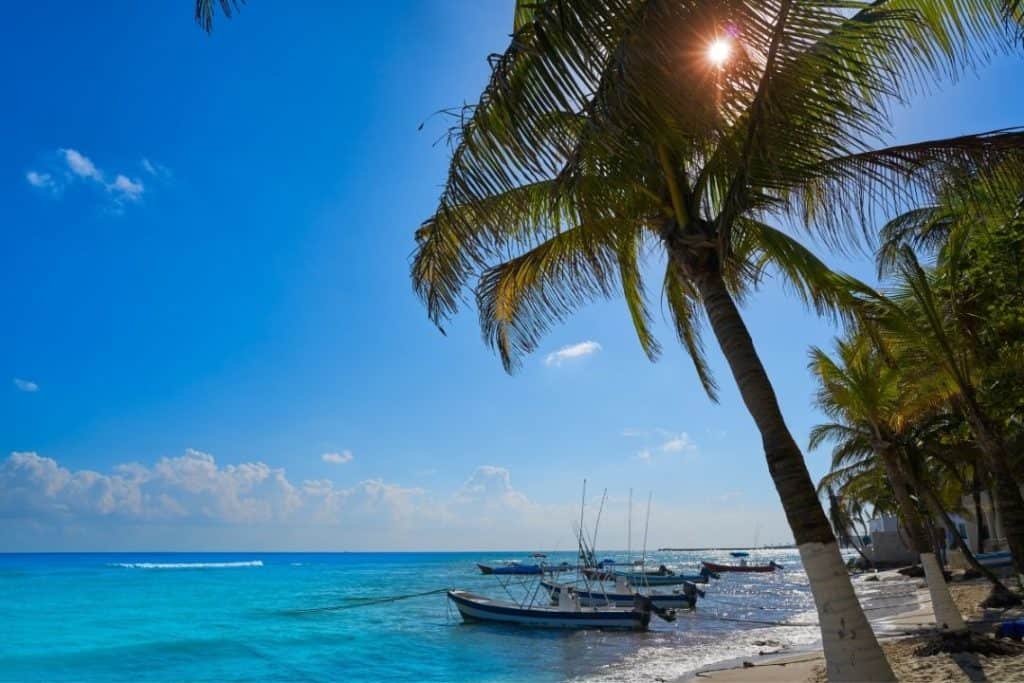
Playa del Carmen is a tourist town an hour south of Cancun known for fun parties and beach margaritas.
But divers know it’s where they can spot bull sharks or explore ancient cave systems. Some dives here require an open water or advanced certification.
Bull Shark Dive
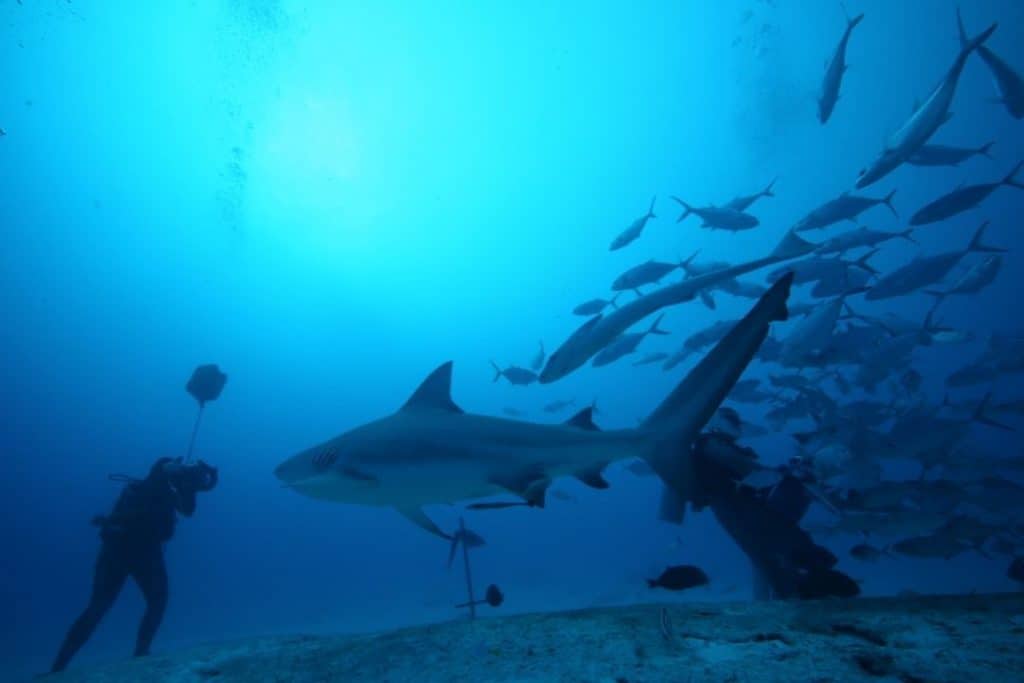
Sharks are a must-see for many thrill-seeking divers (myself included), and you can get up close to bull sharks in Playa Carmen between November and March.
These dives are baited to attract the sharks, so many dive shops take extra safety precautions and require that divers have enough experience to stay calm.
Freshwater caverns (cenotes)
The Yucatan peninsula is littered with beautiful pools of crystal clear water connected to a huge underground underwater caves system.
The water stays around 24°C (76°F) so most divers choose a thick wetsuit. The rock formations within the caves are spectacular.
For cave diving, I highly recommend Dos Ojos, which features a bat cave you can surface into, and The Pit, a 40-meter cave with an acid cloud at the bottom.
See my complete guide to scuba diving in the cenotes where I list all major sites and cover the topic!
Jalisco
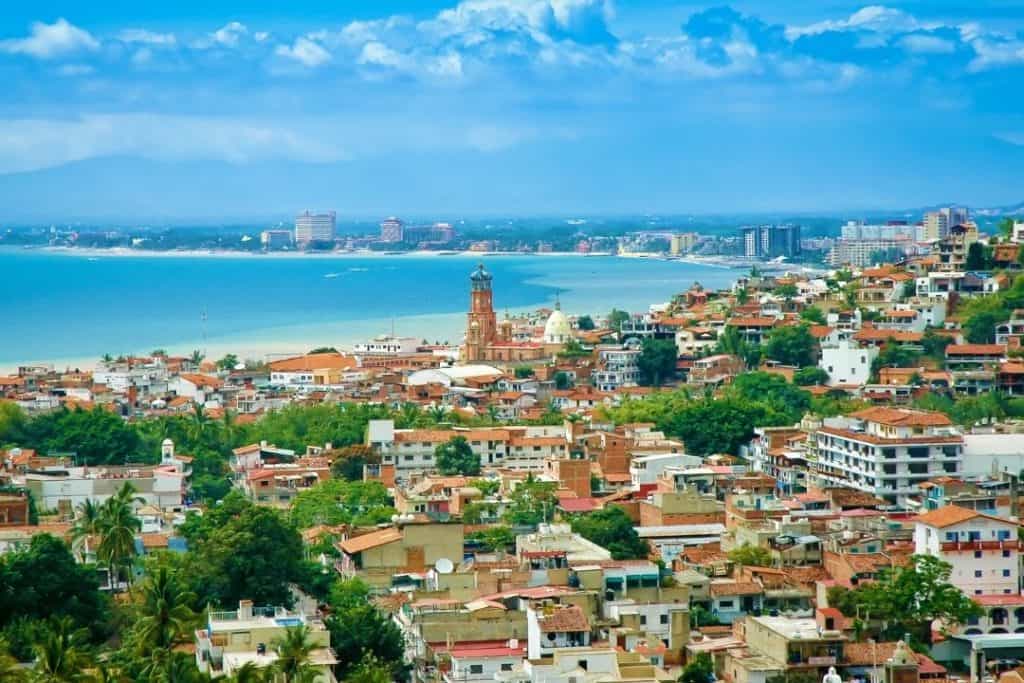
Hugging the Pacific Ocean on Mexico’s west coast, Jalisco is a state full of mountains, jungle, and waterfalls. It’s also the birthplace of tequila!
Puerto Vallarta (click for my complete guide to puerto vallarta) is Jalisco’s charming cruise ship port and a popular starting point for dives all over Banderas Bay.
Diving in the Mexican Pacific isn’t like diving in the Caribbean, as the water temperatures reach as low as 19°C (66°F) in the winter!
Currents bring nutrient-rich water to the coast, which attracts large marine life, but also makes the water green and cloudy at times.
You can see schools of jacks, electric rays, lobsters, and even sea lions if you’re lucky.
From December to March, humpback whales migrate through the bay, and you’ll likely see them jumping from the boat and hear their songs underwater.
Most of the dive sites are a mix of rocky coral pinnacles rise, caves, sand, and a few rocky reefs. Most diving is done from boats, but there are a few places you can shore dive.
There usually isn’t much current, but there can be surge if the water is rough. Banderas Bay has easy and advanced sites, so there is a dive site for everyone.
Getting there
Puerto Vallarta is easily accessible through a flight to its international airport. It’s also a major cruise line destination, and many cruises give you time for a dive trip.
Some brave tourists from the U.S. and Canada even drive all the way down across the northern border for their scuba diving in mexico trip!
Where to stay
Puerto Vallarta stretches along the Bay of Banderas between the mountains and the sea. In the northern part of the town, you can stay by the beautiful marina and watch the cruise ships come and go.
South of that is a zone of modern hotels right on the beach. Continuing south of the Cuale River is the Romantic Zone, which is closer to the historic town center.
Most of the luxury hotels and resorts are located still further south where the town ends, and a winding road leads you along the edge of the mountains.
There are abundant options in Puerto Vallarta, so here are a few favorites:
- Budget: Zen Harmony Suites
- Mid: Villa Del Palmar
- Luxury: Grand Paramar
Islas Marietas
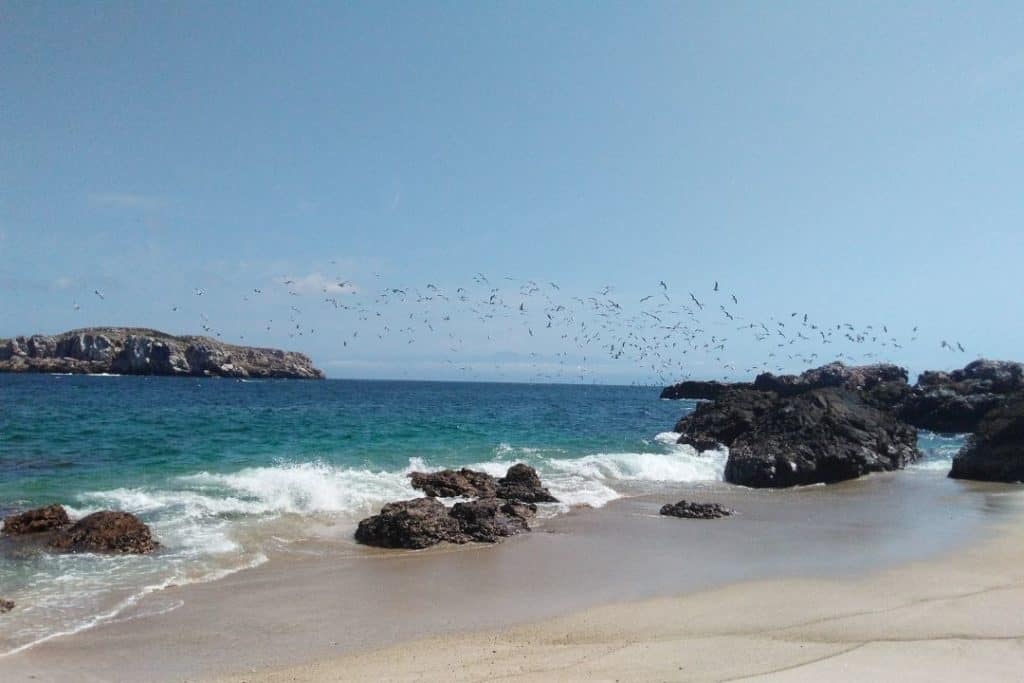
These impressive rocky islands 8 kilometers (5 miles) offshore are a sanctuary for hundreds of birds and marine species.
There are protected sites for beginners as well as deep wall sites for advanced divers. The rocks create fun tunnels to fin through.
Swimming between the corals and rocks, you’ll spot lots of porcupinefish and brightly colored parrotfish. Octopuses are common around the islands, too.
El Morro
One of the best scuba diving spots in mexico’s pacific side, El Morro is a group of rocky pinnacles 42 kilometers (26 miles) off the coast.
Because it’s more isolated and farther from land, the visibility tends to be better than at other sites.
It has walls and a long cave that starts at 30 meters (100 feet) and opens up around 18 meters (60 feet) where turtles can occasionally be found sleeping.
I’ve gotten up close with giant oceanic manta rays and sea lions at El Morro! Rarely, you could spot a whitetip reef shark.
Due to the depth, currents, and occasional surge, this is generally a site for more advanced divers.
Baja California Sur
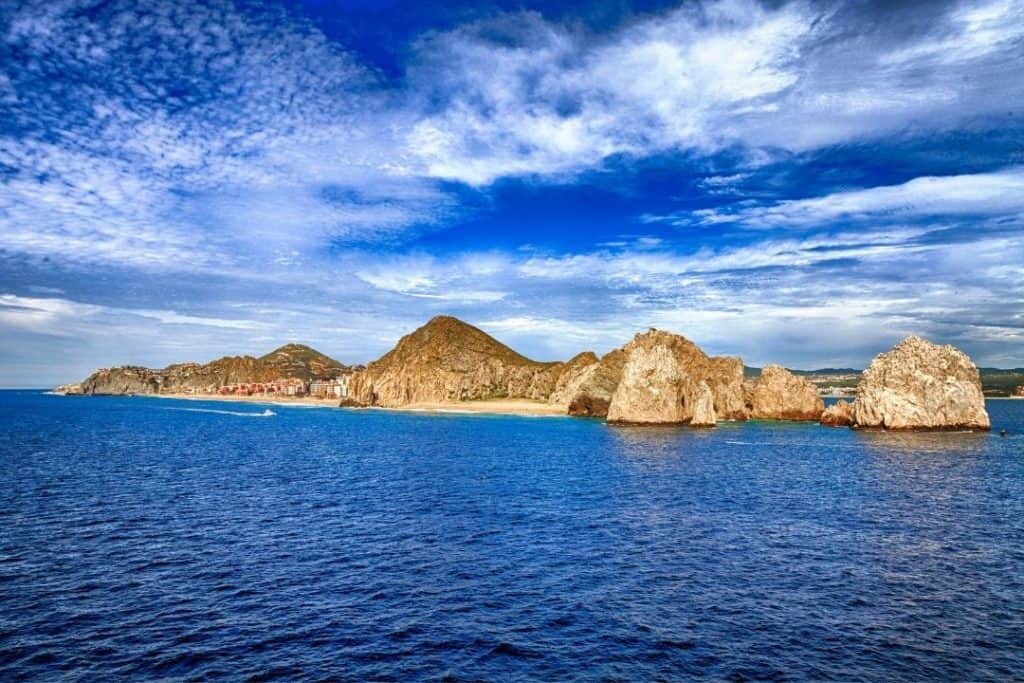
Baja California Sur is famous for the resort destination Cabo San Lucas, but under the water, there’s so much more to discover.
The peninsula has an arid desert-like climate and features a landscape of red rocky cliffs studded with cacti.
The Pacific Ocean on the west and the Sea of Cortez on the east, both of which offer prime dive spots, surround Baja.
Getting there
You can reach Baja California Sur through Cabo San Lucas’s international airport on a flight from Canada, the U.S., or Mexico.
You can either fly to La Paz from Cabo or Mexico City, or you can take a bus there from Cabo. It’s also possible to take a ferry (car included!) from Mexico’s Mazatlan port in the state of Sinaloa over to La Paz.
Some tourists road trip down the peninsula from California.
Where to stay
Cabo San Lucas and La Paz have many options for backpackers to honeymooners. There are beach resorts as well as hostels and hotels within the town.
Cabo Pulmo, on the other hand, is a nature reserve without modern amenities. You can only camp there in rustic facilities.
Most people choose to drive in for the day while staying in a house or hotel in another town.
- Budget: Hotel Tesoro Los Cabos
- Mid: Solmar Resort, Cabo San Lucas
- Luxury: Casa Al Mar, La Paz
Liveaboard
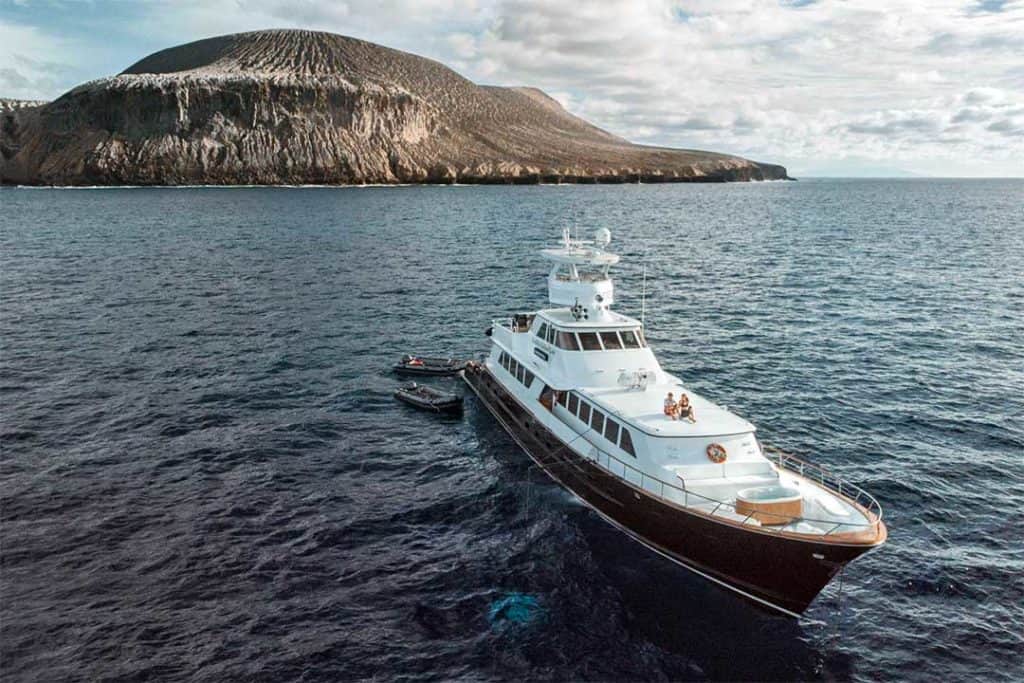
The Nautilus Gallant Lady Liveboard will take you to the best dive sites in Cabo Pulmo while scuba divers can relax in an air-conditioned suite with a private bathroom.
A soak in the deck’s hot tub at the end of a long day of diving is my idea of a perfect evening!
Cabo Pulmo – El Vencedor
Jacques Cousteau called Cabo Pulmo “the world’s aquarium” because of the sheer amount and variety of marine life he encountered there.
Its rocky reefs are home to lobsters, scorpionfish, surgeonfish, and much more. Orcas and dolphins can be seen from the boat as they cruise by the coast.
El Vencedor: A small boat lies in pieces at the sandy bottom of this 14-meter (45 feet) deep site.
Huge schools of snappers and lonely groupers hover around the wreck, but the real stars are the bull sharks that hang out here from December to August.
On my dive here in May, I saw no less than 15 bull sharks cruising around! No bait needed. It’s truly a special dive site.
Cabo San Lucas – Gordo banks
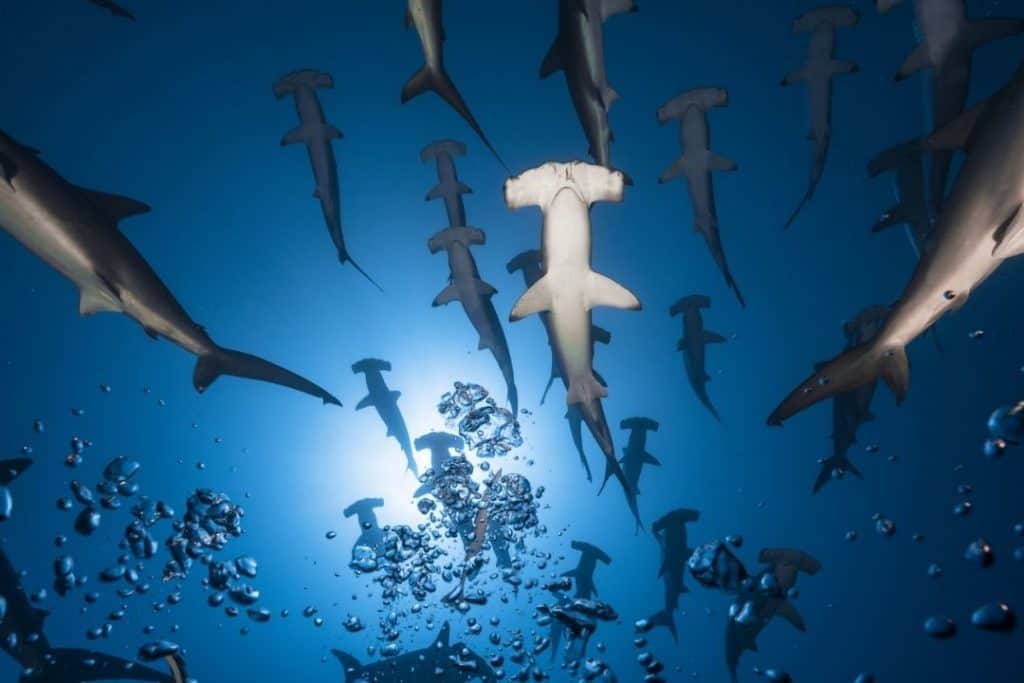
This resort town, popular with both spring breakers and expat retirees, is a desert gem at the tip of the peninsula. Offshore, the famous rocky arch is visible, while underwater, marlin and mahi-mahi school and hunt.
Gordo Banks lies 16 kilometers (10 miles) off the coast of Cabo San Lucas. A boat ride takes you to the seamounts there, which attract schools of hammerhead sharks on a lucky day.
If the sharks don’t show, there are still likely to be schools of jacks and mobula rays. The conditions can be challenging, so this is an advanced dive site.
La Paz
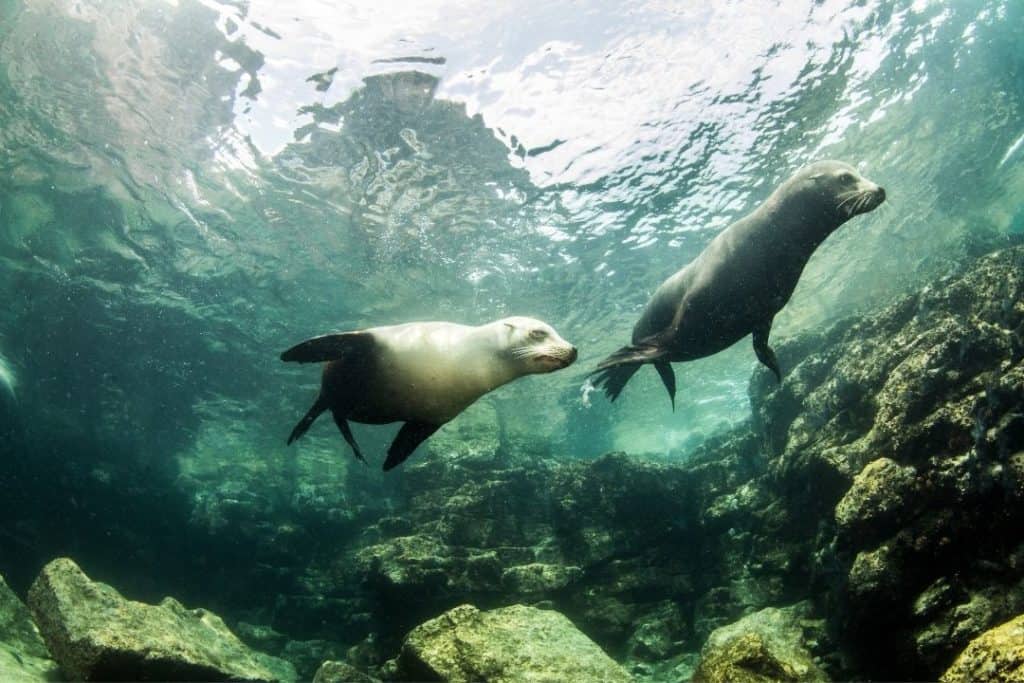
La Paz is the sunny capital of Baja California Sur and features the shallow turquoise waters of the Sea of Cortez. Diving in the sea of Cortez tends to be calmer than in the Pacific.
A dive at Espiritu Santo Island 26 kilometers (16 miles) from La Paz will get you up close and personal with the sea lion colony that lives there.
Sea lions tend to be curious and acrobatic underwater and are generally used to divers at sites like these.
Remote Pacific Islands
Far out in the Pacific lie the true hidden treasures of Mexican scuba diving. Volcanic island chains attract large marine species looking for prey and mates.
The Revillagigedo Archipelago is a UNESCO World Heritage Site, and its vast array of marine life is under Mexican federal protection.
Guadalupe Island is a biosphere reserve whose seal population draws the most impressive predator of all.
Socorro Island
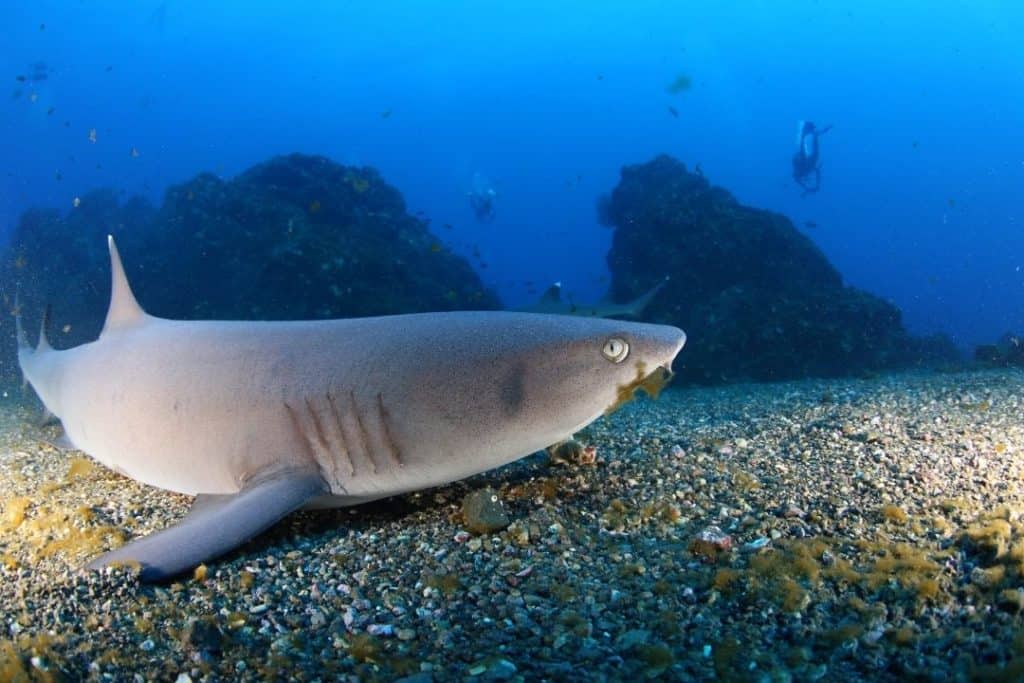
Part of the Revillagigedo Archipelago, Socorro is a volcanic island 600 kilometers (370 miles) off the west coast of Colima, Mexico.
This top scuba diving destination is a national reserve and marine park famous for the large pelagic species that scuba divers can see there.
It’s common to see hammerheads, dolphins, mantas, and whale sharks – all on the same trip!
Huge schools of tuna and barracuda are known to patrol the dive sites as well. Divers can encounter not only impressively large animals, but lobsters and small white tip sharks nestled in the rocky coral reefs.
The water tends to be cold (as low as 21°C/69°F) during the diving season from November to May, but visibility is usually excellent.
Due to potentially rough conditions, it’s generally a place for advanced divers.
Guadalupe Island
Guadalupe is an extinct volcanic island, and it lies 241 kilometers (150 miles) west of the Baja California Peninsula.
Technically, the island doesn’t have any official dive sites, but some of the most amazing diving in the world can be found here – great white shark diving!
For safety reasons, divers observe the sharks from a cage parked near the surface in deep water.
Most shark cage diving setups are submerged from boats, but new self-propelled cages allow divers to actually swim alongside the sharks.
The great whites swarm the island from August to November, when the water is between 21-24o (70-75oF).
Beginners and experienced divers can all take advantage of the opportunity to see the world’s largest predatory fish in the wild.
Getting there
Socorro is only accessible by liveaboard dive trips from Cabo San Lucas. You can fly into Cabo or take the ferry from the Mexican port of Mazatlan, then drive down from La Paz.
The boat trip will last about 26 hours just to arrive at the island, and then you’ll spend six to eleven days hitting the best dive sites. The liveaboards return to Cabo San Lucas.
Guadalupe Island is also only accessible via liveaboard. You can hop on a round-trip liveaboard from San Diego, California, or Ensenada in Mexico.
The trip to reach the island will take around 18-24 hours.
Liveaboards
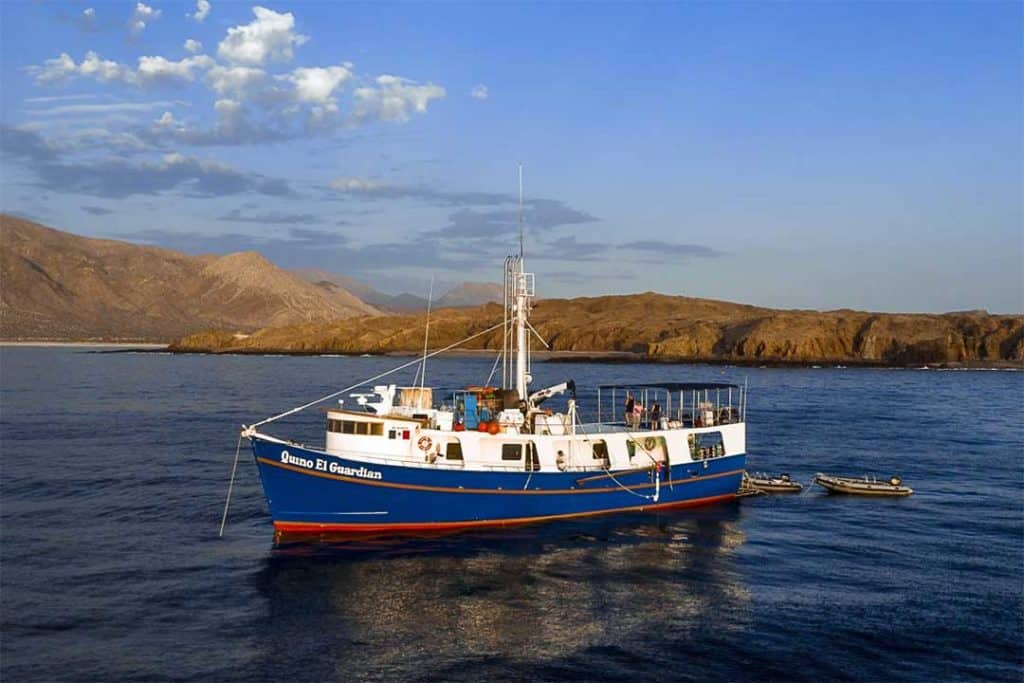
The Quino el Guardian is especially fitted for diving with a huge dive deck and a Zodiac to transport divers to hard-to-reach sites at Socorro.
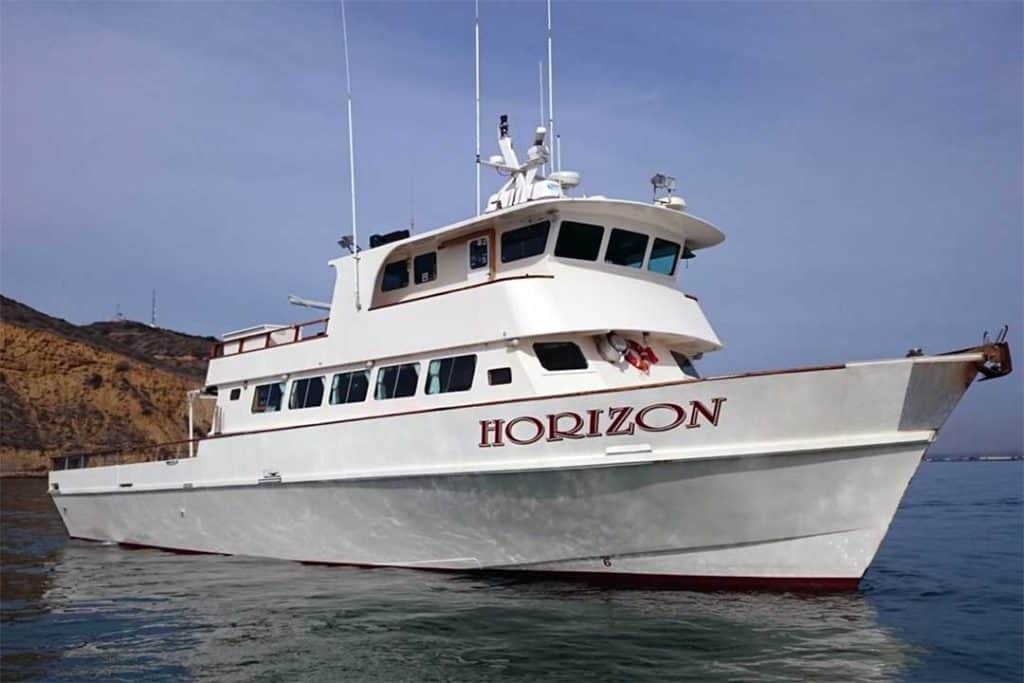
In Guadalupe, the MV Horizon – lovingly called America’s Shark Boat – offers days of cage diving with great whites with an emphasis on safety.
Diver’s FAQ guide to Mexico
What’s the best time of the year to dive in Mexico?
Mexico has such a diversity of dive locations that there is diving available all year round. The Caribbean stays warm throughout the year between 26-30°C (79-85°F), and the cenotes are an option year-round as well.
You can also dive all year in Jalisco, although water temperatures drop in the winter from November to March, and the sea becomes rough and green.
The most pleasant dive destinations in Jalisco is in the summer from May to October, when the water is clearer and warmer.
The same applies to diving in Baja California. The Pacific islands, like Socorro and Guadalupe, have specific seasons that liveaboards will visit.
You can head over to see the great whites in Guadalupe from August to November, whereas trips to Socorro run from November to May.
How much does scuba diving cost in Mexico?
You can find diving for any budget in Mexico. A simple beginner shore dive in Cozumel with a local dive operator could cost as little as $60, whereas a liveaboard trip in the Pacific will run you several thousand dollars.
In Quintana Roo, Jalisco, and the Baja Peninsula, you’ll be able to find two tank dives with rental gear at reasonable prices, somewhere around $150.
But there are also options to charter more luxurious boats and private trips in these areas, so you could spend more if your budget allows.
The most expensive diving will be liveaboards to Socorro or Guadalupe.
Since liveaboards are essentially floating hotels with dining and entertainment for a week or more, they usually cost a few hundred dollars a day. On top of that, you’ll also have to pay tax, park fees, gear rental, and crew tips.
Is diving in Mexico safe?
The short answer is: yes! The long answer is: yes – if you do your research and stick to your limits. In any country, there will be tour operators looking to make quick money with little regard for safety.
There are many dive shops in each region, so take the time to do your research. Look for online reviews, look up a shop’s PADI dive center number, and talk to the owner or instructor before booking.
Make sure they’re willing to explain how their operation works and answer your safety questions.
If your guide rushes you, asks you to dive past your certification limits, or doesn’t follow safety procedures, you have the option to find different diving destinations.
There are many high-quality scuba operations in Mexico, and you can definitely find one you feel comfortable with.
Do you have to be certified to dive in Mexico?
You don’t have to be certified to dive in Mexico. In most locations, you can do a beginner dive without being certified.
During a beginner, ‘discover suba diving’ dive, you take a short class and stay with an instructor in a shallow, protected area.
Theoretically, you could keep diving forever without getting certified, but you’d be limited to 12 meters (40 feet) of depth, and you’d have to take the same class over and over.
That’s why most people who fall in love with diving decide to get their open water certification, which allows them to dive with a certified buddy or guide up to 18 meters (60 feet).
Most dive shops offer open water and advanced certifications, so Mexico is a great place to level up your dive skills. For cenotes, advanced sites, and diving on liveaboards, you definitely have to be certified.
Can I dive with whale sharks in Mexico?
It’s a common misconception that whale shark diving is popular in Mexico. While there are whale sharks all over the Mexican coasts, operators only offer snorkeling tours with the whale sharks.
You’re not allowed to don scuba gear on these tours, and since the sharks hang out by the surface, there is no need to.
In Quintana Roo, the isla mujeres whale shark season lasts from May to August. In Baja California Sur, you can take a whale shark snorkel tour from La Paz or Cabo San Lucas between November and April.
Whale sharks live in every tropical ocean and sea, so they could theoretically show up on any dive in a tropical location.
But this is pretty rare in Mexico, and there are no whale shark scuba tours. You’d be most likely to see one at El Morro or on a liveaboard at Socorro.
Conclusion
Mexico is truly a well-rounded dive destination with experiences for divers of every level.
Did you have an amazing experience at a different location in Mexico?
If you have a place to add to this best diving destinations list or want to ask a question, drop a comment below!
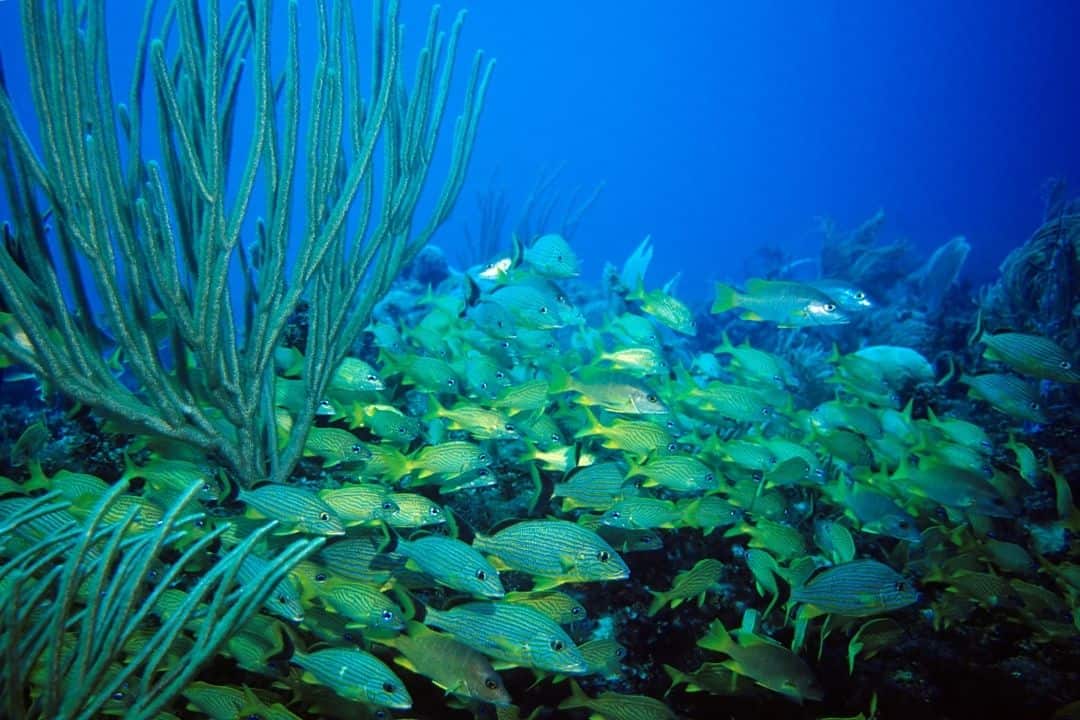
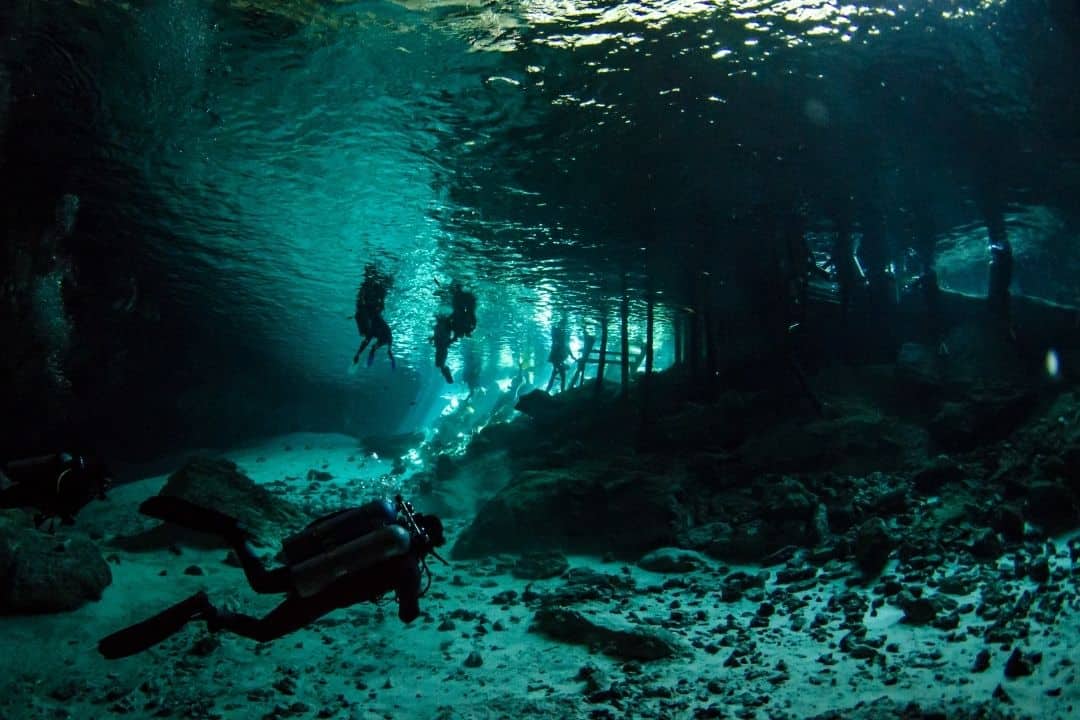

Thank you for putting together such a lovely read. The information is very helpful.
Thanks Alexandra!